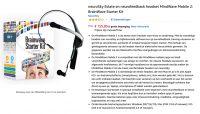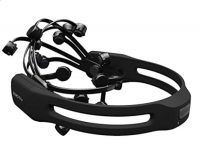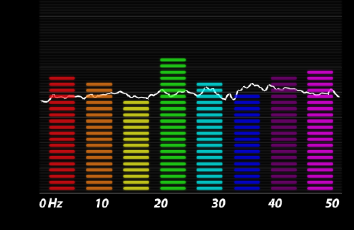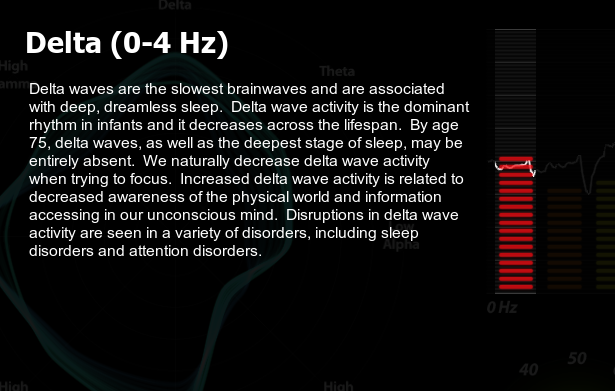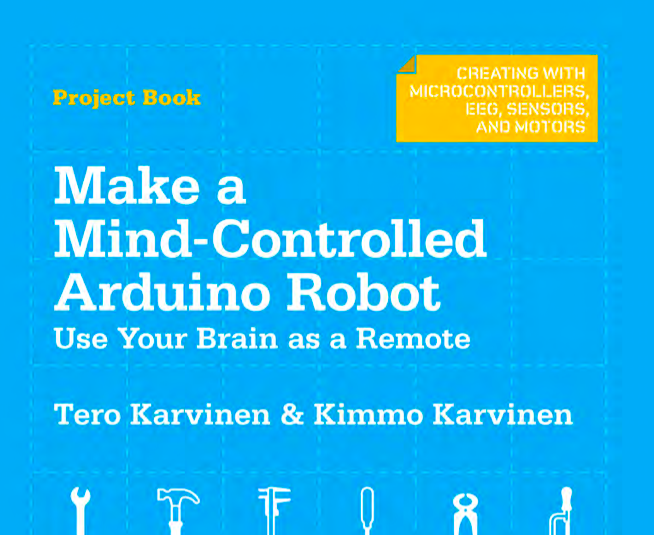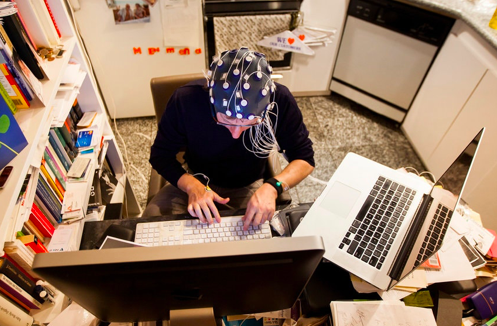Difference between revisions of "EEG"
| Line 65: | Line 65: | ||
[[File:ee11.png]] | [[File:ee11.png]] | ||
| − | These are general stories. The hidden magic is how to get from the numbers coming out of the devices to these general ideas about the brain frequencies and to connect these frequencies to the topics which are promised. | + | These are general stories. The hidden magic is how to get from the numbers coming out of the devices to these general ideas about the brain frequencies and to connect these frequencies to the topics which are promised: meditation, concentration and maybe even emotions. |
== possible goals == | == possible goals == | ||
Revision as of 10:25, 17 April 2020
intro
Regularly students discover EEG brain sensors. These sensors are very attractive!
And the price is between 100 and 1000 euro's.
You should certainly use it and experiment with it, if you want to. Depending on your goal and project it might work. But also be realistic and critical about these devices.
Goals for which the EEG brain device in your project could work:
- investigating devices which might work in the future.
- speculative design, where you suggest possible applications, and then hope that a technician will find a way to make it work.
Goals for which the EEG brain device doesn't work, but it might be fun:
- measuring emotions with accuracy and using these "real" measured emotions in some way.
Goals for which your project will certainly end up in a real disaster:
- steering your car or anything else which might go wrong with your brain sensor device.
Neurosky Mindwave (amazon.nl), at the moment 155 euro's.
Student projects
Jasna Rokegem (Fashion Design) was one of the first students graduating with a "Fashion on brainwaves" project. She founded her own company on this idea after graduating. She exploits the "speculative" goal.
For her graduation she made these outfits.
- an outfit with a collar rising and lowering, depending on stress level.
- an outfit changing between a female and a male silhouet
- an outfit which shows "emotions" as color patterns on the back
https://www.jasnarok.com/work/#fashion-on-brainwaves
devices
There are many devices, a selection:
The Mindwave Neurosky is affordable, 100 (this one is always sold out), this one is available: 155 euro at amazon.nl.
The Emotiv EPOC is much more expensive: around 1000 euro's. (989 euro at amazon.nl at the moment)
The Muse is in between 300 euro's. (273 euro at amazon.nl at the moment)
Explanations
The stories about the brain waves coming with the devices (the following from the Mindwave) are quite impressive. They tell about 8 fundamental brain frequencies:
All the frequencies
One example, the delta waves:
These are general stories. The hidden magic is how to get from the numbers coming out of the devices to these general ideas about the brain frequencies and to connect these frequencies to the topics which are promised: meditation, concentration and maybe even emotions.
possible goals
Emotion measurement One goal students like is the measurement of "emotions". The idea of having emotions seems so simple. Say ... Happiness, isn't that simple? No! There has been an debate over centuries what it exactly is this "happiness". Many good texts about "happiness" if you are interested, take a bit of time reading these texts...say 20 years?
So what is happiness, is difficult. But this EEG device just "measures"? So it must be clear? No, because the EEG device produces "numbers", many numbers every second. Somebody - a person, like you and me - has to program an algorithm which interpreted these data, and tells you: this is happiness. If the literature indicates how wide the ideas of happiness differ, then how for this programming person to "know" what numbers represent "happiness"?
concentration and meditation Many texts are about "meditation" improvement. "meditation and concentration" are not emotions, maybe these "state of mind" can be measured more easily. At the same time you read that the thing on your head is not comfortable or hurts within 30 minutes. I also had this experience, that it is not "fun" wearing these devices. Take the clip into your ear of the Neurosky Mindwave. Being irritating and "meditation improvement" is for me a paradoxical, but it might work for you!
Steering devices with brain waves This seems more straightforward. You could use pattern recognition. Then you avoid the problem of "what is happiness". Using AI for getting it right, without understanding the underlying principle. Even then. For AI to work, you need thousands of times telling the device this was right, this was left. And every person has a slightly different "brain"...
Driving a car with your brain There is a study about the "steering" possibilities. Rather devastating for the idea that you can drive a car with your brain waves. Even if the accuracy was 90%, then there would be many more accidents as we now have. Strange idea by the way, because ... what is the difference, don't we use our brain also for avoiding accidents? The difference is again: interpretation by algorithms. In the case of EEG brain waves driving the car, there is a person - programmer, in between us and the car.
https://www.ncbi.nlm.nih.gov/pmc/articles/PMC4806709/
my own experiments
You can rely on research by others, but you should also perform your own experiments.
When Jasna Rokegem came to me with the brain sensor I started doing experiments, it was the Neurosky Mindwave, an earlier version, 1 "dry" forehead sensor. The results were not convincing. I was puzzled, because it was so bad, that I suspected to do something wrong. The signals just didn't make sense at all. I looked at reports from other people and they also confirmed that the results were sometimes right, sometimes wrong. This Mindwave sensor was in that time used in a game steering pushing a ball towards the other using brain waves. So "steering".
In the City Lab, our school had the Emotiv. This device had 14 sensors! But these sensors were the "wet" version. And the sockets were already corroded. Having this Emotiv on, the interpretation of the signals told me I was super concentrated at one moment and immediately after that totally un-concentrated.
check? Even if these results were "true", it is impossible to check, because you cannot put two devices on your head. (I tried.) If you cannot "check" the results of a sensor in the same situation (time and person), how can you ever be sure?
research
scientific evaluation of the possibility to "steer" and measure "attention/meditation" with the consumer EEG brain sensors:
https://www.ncbi.nlm.nih.gov/pmc/articles/PMC4806709/
In this article the concepts of "relaxation" and "attention" are well described with links to articles.
Conclusion: (from the part "Discussion" of this article)
"Overall recognition accuracy of both the concentration (attention) and relaxation (meditation) mental states of subjects were 60.5% (for the Emotiv device) and only 22.2% (for the Neurosky device), which is not very usable in a practical sense."
Maskeliunas, R., Damasevicius, R., Martisius, I., & Vasiljevas, M. (2016). Consumer-grade EEG devices: are they usable for control tasks?. PeerJ, 4, e1746. https://doi.org/10.7717/peerj.1746
This gives objective percentages and corroborates my own subjective "feelings" of how these devices worked for me.
consumer comparison of the devices, indicating sensors and data rate, for instance
http://learn.neurotechedu.com/headsets/
DIY experiments
O'Reilly
https://www.amazon.com/Make-Mind-Controlled-Arduino-Robot-Microcontrollers/dp/1449311547
An "O'Reilly" book. Mainly about making and coding a small Arduino Robot and then connecting it to the signals of the Neurosky. You will learn an incredible lot about building and coding things. Then you have this little robot and you think it reacts on the signals of the Neurosky, which is true. :-)
Hacking the Mindwave:
https://learn.sparkfun.com/tutorials/hackers-in-residence---hacking-mindwave-mobile/all
hacks from Neurosky itself:
With Arduino and Raspberry Pi projects
http://developer.neurosky.com/docs/doku.php?id=projects
a significant cultural experiment
Arnon Grunberg
Although not one of the devices above mentioned, Arnon Grunberg, one of the well known Dutch writers did an interesting experiment, wiring himself to a headset with many electrodes. The goal was to record his emotions while writing and then compare the measurements of his emotions with the measurements of the readers of his text. This experiment failed because the researchers could not find "his" emotions while writing. The explanation was that - probably - writing is rational, and not emotional.
If this device with its many sensors and in quite a scientific setting, with accompanying neurologists and scientists is not even working as they thought it would, how can the toys produce any sensible result?
Dutch reports
- http://www.volkskrant.nl/dossier-arnon-grunberg-doorgemeten/proefkonijn-grunberg-hoe-werkt-een-schrijversbrein~a3547359/
- http://www.gezond24.nl/tv-uitzending/g24_954/De-emoties-van-Arnon-Grunberg-1
- http://www.gezond24.nl/tv-uitzending/g24_2196/De-emoties-van-Arnon-Grunberg-2
English:
all links used
scientific research papers
https://www.ncbi.nlm.nih.gov/pmc/articles/PMC4806709/
Arnon Grunberg
Dutch reports
- http://www.volkskrant.nl/dossier-arnon-grunberg-doorgemeten/proefkonijn-grunberg-hoe-werkt-een-schrijversbrein~a3547359/
- http://www.gezond24.nl/tv-uitzending/g24_954/De-emoties-van-Arnon-Grunberg-1
- http://www.gezond24.nl/tv-uitzending/g24_2196/De-emoties-van-Arnon-Grunberg-2
English:
Some of the Devices
- Neurosky:
- Emotive:
- Muse:
conclusions
There are numbers coming "from the brain".
Many numbers.
With many numbers you can do anything.
You can even have fun:
But for the rest be careful, these consumer EEG brain sensors are (sometimes quite expensive) toys.
Behave speculative with these toys!
